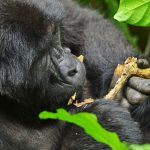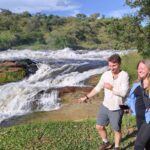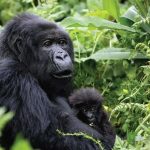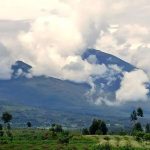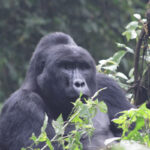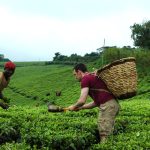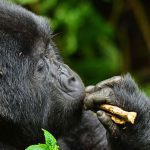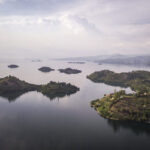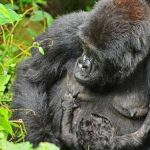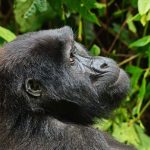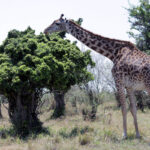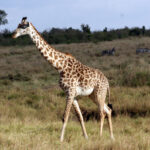Rwanda is a year-round destination, but the best time to visit depends on your interests and priorities. The country has a tropical highland climate due to its high elevation. Its temperatures rarely exceed 30°C (86°F) or drop below 15°C (59°F) at night while the average daily temperature in Kigali is 21°C (70°F).
The best time for gorilla trekking in Volcanoes National Park and other outdoor activities is between June and September as the trails are less muddy and more accessible. The dry season also provides better wildlife viewing opportunities in Akagera National Park.
However, if you are interested in bird watching, the wet season from March to May is the best time to visit Rwanda, as the birdlife is more active and visible during this time.
Overall, the best time to visit Rwanda is between June and September, as the weather is drier and more pleasant.
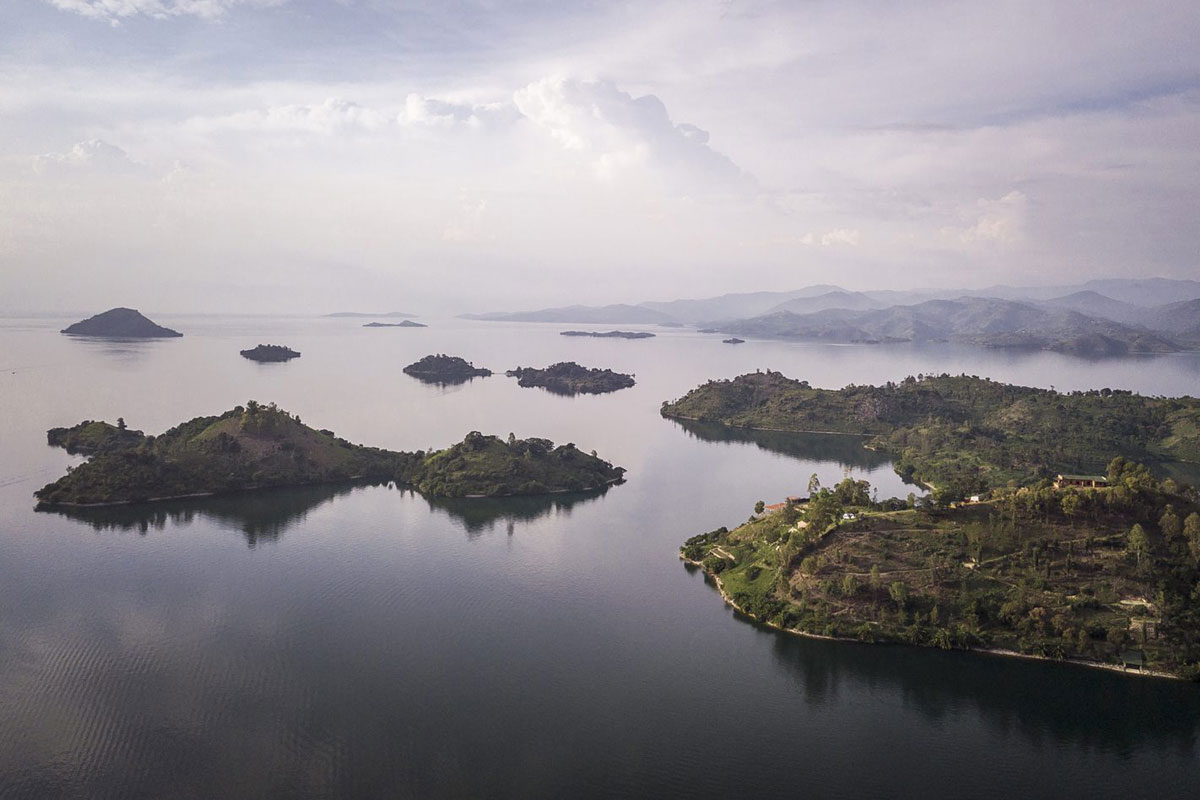
Climate of Rwanda
Rwanda has a temperate tropical highland climate due to its high elevation. The country is located near the equator, but the high altitude of most of the country gives it a much cooler climate than its location would suggest. Rwanda has two distinct seasons: the dry season and the wet season.
The dry season runs from mid-May to mid-October and is characterized by mild temperatures and low rainfall. During this time, temperatures range from 15°C to 28°C (59°F to 82°F), and the weather is generally sunny and pleasant.
The wet season runs from mid-October to mid-May and is characterized by heavy rainfall, especially from March to May. During this time, temperatures range from 12°C to 27°C (54°F to 81°F), and the weather is generally cloudy and humid.
Climate of Rwanda by month
1. January
January is one of the wettest months in Rwanda, with high humidity and plenty of rainfall. Temperatures range from 12°C to 27°C (54°F to 81°F), with the lower temperatures occurring at higher elevations.
The rainfall can make outdoor activities challenging, but it also makes the landscape lush and green.
2. February
February is still part of the wet season in Rwanda, with similar conditions to January. Temperatures range from 12°C to 27°C (54°F to 81°F), and the rainfall can make travel and outdoor activities more difficult.
3. March
March is one of the wettest months in Rwanda, with heavy rainfall and high humidity. Temperatures range from 12°C to 27°C (54°F to 81°F), and the rainfall can cause flooding and landslides in some areas.
The high humidity can make it feel very sticky and uncomfortable.
4. April
April is still part of the wet season in Rwanda, with plenty of rainfall and high humidity. Temperatures range from 12°C to 27°C (54°F to 81°F), and the rainfall can make some roads and trails impassable.
5. May
The wet season starts to wind down in May, with decreasing rainfall and milder temperatures. Temperatures range from 13°C to 27°C (55°F to 81°F), and the landscape starts to dry out.
May is a good time for bird watching and other activities that are better enjoyed in a lush, green environment.
6. June
June marks the beginning of the dry season in Rwanda, with mild temperatures and low rainfall.
Temperatures range from 12°C to 27°C (54°F to 81°F), and the weather is generally sunny and pleasant. June is a great time for gorilla trekking and other outdoor activities.
7. July
July is one of the driest months in Rwanda, with cool temperatures and plenty of sunshine.
Temperatures range from 10°C to 25°C (50°F to 77°F), and the low humidity makes it feel very comfortable. July is a great time to visit Rwanda if you want to enjoy outdoor activities in cooler weather.
8. August
August is a great time to visit Rwanda, with cool temperatures and little rainfall. Temperatures range from 10°C to 25°C (50°F to 77°F), and the weather is generally dry and pleasant.
August is a popular month for gorilla trekking and other outdoor activities.
9. September
September is a great time to visit Rwanda, with mild temperatures and little rainfall. Temperatures range from 11°C to 26°C (52°F to 79°F), and the weather is generally sunny and pleasant.
September is a good month for outdoor activities, but it can be busy with tourists – especially in the hotspot areas.
10. October
October is the start of the wet season in Rwanda, with increasing rainfall and humidity. Temperatures range from 12°C to 27°C (54°F to 81°F), and the landscape starts to turn green again.
October is a good month for bird watching and other activities that are better enjoyed in a lush environment.
11. November
November is part of the wet season, with plenty of rainfall and high humidity.
Temperatures range from 12°C to 27°C (54°F to 81°F), and the rain can make some roads and trails impassable. November is a quieter month for tourism, so it can be a good time to visit if you want to avoid crowds.
12. December
December is still part of the wet season in Rwanda, with heavy rainfall and high humidity.
Temperatures range from 12°C to 27°C (54°F to 81°F), and the weather can be very wet and muddy. December is a good month for bird watching, but outdoor activities can be challenging due to the rainy conditions. It’s also a festive month, with many celebrations and events taking place.
What to wear in Rwanda
What to wear in Rwanda depends on the season and the activities you plan to do. Here are some general guidelines:
Lightweight, breathable clothing is recommended, especially during the hot and humid months of January to April. Since Rwanda has a mild climate throughout the year, lightweight and comfortable clothing made from breathable fabrics like cotton, linen, or moisture-wicking synthetic materials is recommended.
If you are visiting during the cooler months of June to August, you may want to bring some warmer clothing, such as a light sweater or jacket for the evenings. Even during the dry season, temperatures can vary throughout the day, so it’s best to bring layers that can be easily added or removed as needed.
If you plan to hike or trek in Rwanda’s national parks, be sure to bring sturdy hiking boots, long pants, and a long-sleeved shirt to protect against insects and thorny vegetation. Also, consider bringing a hat, sunglasses, and sunscreen for sun protection.
It’s always a good idea to bring a waterproof jacket or poncho and an umbrella, as rain can occur year-round, especially during the wet season from March to May and October to December.
In terms of cultural sensitivity, it’s recommended to dress conservatively when visiting local communities, especially in rural areas. Rwanda is a quite conservative country, and it’s important to dress modestly, especially when visiting religious sites or rural areas. Avoid revealing clothing like tank tops or shorts, and opt for clothing that covers the shoulders and knees.
Overall, packing lightweight, comfortable clothing that can be layered is a good strategy, along with sturdy shoes and rain gear, to be prepared for the variable weather conditions in Rwanda.
Conclusion
Rwanda has a pleasant climate throughout the year, with temperatures ranging from 10°C to 27°C (50°F to 81°F). The best time to visit Rwanda depends on your preferences and the activities you plan to do.
The dry season from June to September is popular for gorilla trekking, while the wet season from March to May is better for bird watching and enjoying the lush green landscape.
Regardless of the time of year, it’s important to pack comfortable and breathable clothing, layers, rain gear, hiking or trekking gear, modest clothing, and comfortable shoes. By following these guidelines, you’ll be well-prepared to enjoy all that Rwanda has to offer.

